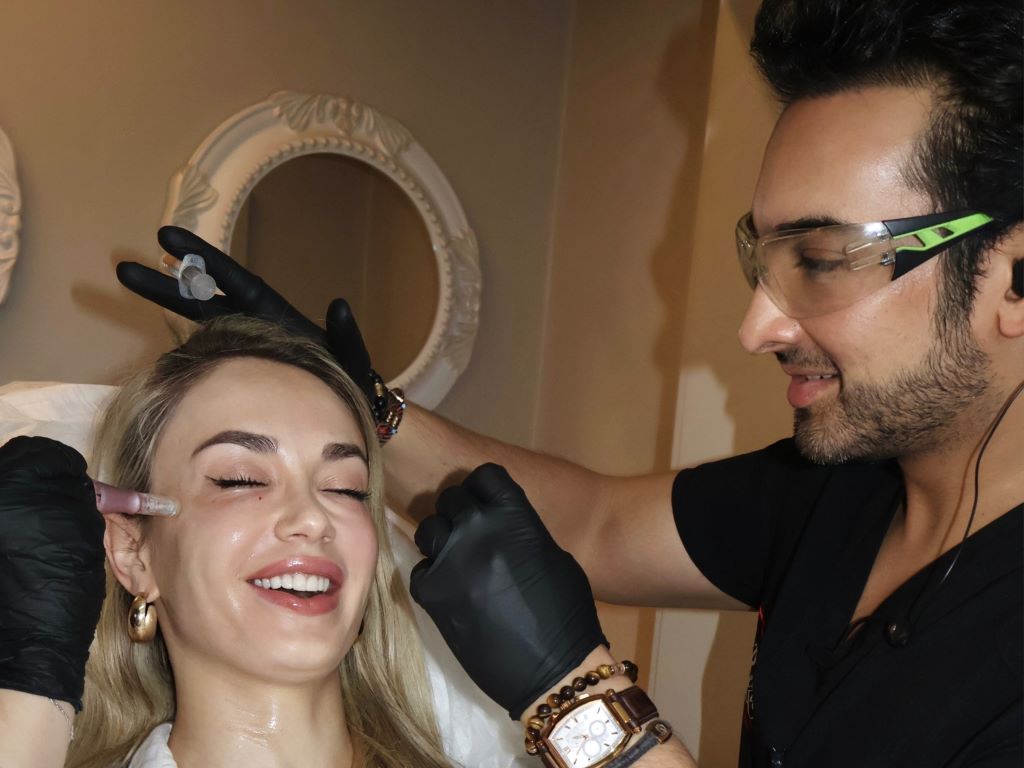Move Over Fillers: Why SA Patients Are Choosing PRF Anti-aging Treatments

A major shift is underway in South Africa’s aesthetics industry, as cutting-edge platelet-rich fibrin (PRF) is quickly surpassing fillers or traditional platelet-rich plasma (PRP) therapy as the anti-ageing treatment of choice, delivering results that patients describe as “four times better” than its predecessor.
“Since introducing PRF into our practice, patients overwhelmingly choose it over PRP for skin rejuvenation and anti-ageing,” notes Dr Reza Mia, aesthetics expert at Anti-Aging Art in Johannesburg. “It means injecting a more potent concentrate with four times the cells to produce the results needed than previous alternatives, and subjectively, patients report it’s indeed four times better.”
A significant evolution from the once-popular “vampire facial”, PRF uses concentrated healing cells from the patient’s own blood to address an impressive range of concerns.
“When someone needs to improve their skin condition, stimulate hair growth, treat stretch marks and scarring, heal certain injuries or wounds, or even enhance intimate well-being with our P-shots and V-shots, PRF delivers some extraordinary results. For example, with our P-shots and V-shots, we’re seeing dramatic improvements in post-menopausal and post-pregnancy concerns among women, while men are achieving some enhancements in size, function, and performance,” he explains.
Turning platelets into a living filler
Through cutting-edge techniques, Dr Mia’s team turns the patient’s blood into a natural injectable filler with a blend of active cells and filler material, creating a gel-like substance. The filler is then injected back into the face or other areas where volume is needed, offering a compelling substitute for hyaluronic acid fillers, and a more powerful alternative to synthetic products.
PRP’s shorter lifespan comes from the use of anticoagulants that prevent clotting and keep the platelets inactive until they are injected. These additives thin the solution, causing it to spread quickly in the body. As a result, the treatment has less time to work and build momentum.
Because anticoagulants can interfere with the regenerative properties of platelets, they aren’t used in PRF. Instead, PRF works with the body’s natural fibrin clotting process, creating a rich concentration of platelets, healing proteins, and repair signals that trigger tissue regeneration and collagen production – helping the skin recover and appear more youthful for longer.
“These platelets stay active for roughly three weeks, instead of the 12-hour window we see with PRP. The release is gradual and the platelets have more time to work in the body, so collagen and fibronectin production is stimulated for longer. This translates into thicker skin, steadier hair-growth cycles, and a noticeably longer glow. Our clinic further uses an advanced centrifuge protocol that can achieve more than four times the platelet count from a session with PRF, packing each vial with far greater regenerative potential.”
In practice, Anti-Aging Art uses PRF to revitalise and restore wherever the skin or hair needs a boost. It’s become a go-to for smoothing fine lines, strengthening hair follicles to fill in patchy beards and thinning crowns, and refreshing postpartum skin. “Many patients who switched from PRP to PRF report they healed faster and need fewer follow-up visits, making it a preferred option.”
The recovery time is also notably shorter. “With standard microneedling, patients remain red for two to three days. With PRF, they’re red for just a day – the platelets actually accelerate their healing.”
A non-surgical breast enhancement alternative
One of the most groundbreaking applications has been for non-surgical breast enhancement. “For patients who’ve removed their implants and now have tissue laxity, or those seeking natural enhancement without surgical implants, PRF filler is a game-changer. For breast enhancement, there really isn’t an alternative, with results lasting as long as six to 12 months.”
Because PRF is taken from the patient’s own blood and then allowed to thicken into a soft gel before injection, it acts like a natural cushion inside the breast. Once placed, the gel holds its shape for a few weeks, giving an immediate subtle lift. The platelets inside also continue to release growth signals that tell the body to lay down fresh collagen and create tiny new blood vessels, so the early fullness slowly turns into real, living tissue instead of fading away like normal swelling.
“Patients like that the injected material is completely theirs, with no risk of immune rejection, hard capsules or implant leaks, while routine mammograms remain easy for radiologists to read. Most women feel only mild bruising and heaviness for a day or two, and they’re back to normal within the week.
“There is some swelling over the first few days, so patients should plan treatments well before any special events. If you choose a top-up after a year, the new PRF simply layers onto existing tissue, giving a gentle, cumulative boost without stretching the skin unnaturally.”
Treatments start around the cost of a mid-range smartphone and vary based on the extent of the area treated. Results become visible quickly but continue to improve over time, developing over three to six months as collagen rebuilds, delivering significant value compared to multiple syringes of traditional fillers or surgical options.
However, Dr Mia cautions that PRF is powerful but not magical. “Regeneration has a biological ceiling. We can thicken skin, soften scars, and enhance breasts naturally, but PRF doesn’t replace surgical intervention for augmentation. PRF also isn’t appropriate for everyone – especially anyone with active cancer in the treatment area, since the growth factors could stimulate those cells.
“But for most patients seeking a rejuvenated, youthful appearance with that coveted ‘juicy’ glow, PRF delivers results that synthetic alternatives simply can’t match,” he concludes.



